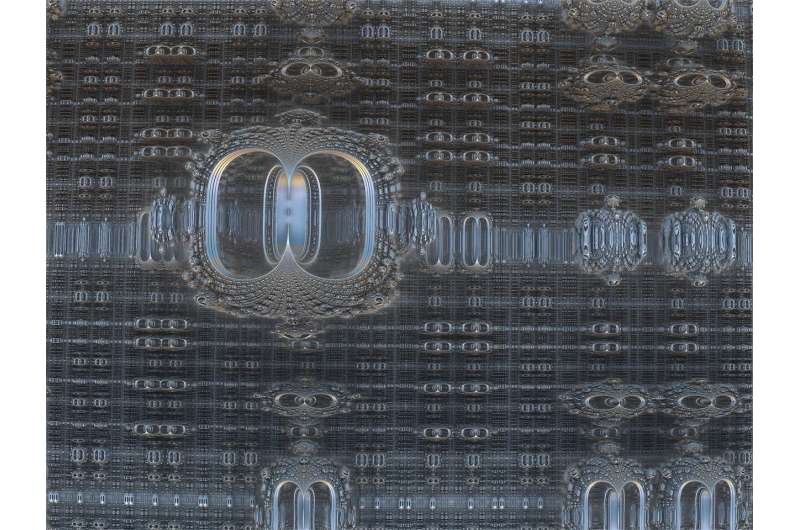A new artificial quantum material for future high-efficiency computers

Scientists at Tsinghua University and Institute of Physics, Chinese Academy of Sciences in Beijing, have demonstrated the ability to control the states of matter, thus controlling internal resistance, within multilayered, magnetically doped semiconductors using the quantum anomalous Hall effect.
The quantum anomalous Hall effect (QAH) occurs in some specially designed materials in which electrons can move a millimeter-scale distance without losing their energy. The ability to apply this effect to devices would allow a new revolution in energy efficiency and computation speed.
In a study published in the journal Chinese Physics Letters, researchers say they have fabricated an artificial material that could be used to develop a topological quantum computer using molecular beam epitaxy, a new technique allowing the stacking of single-molecule-thick layers of crystal, and by exploiting the QAH effect.
A quantum computer takes advantage of the ability of subatomic particles to be in multiple states at once, instead of the binary one or zero seen in conventional computers, allowing them to solve certain types of problems much more efficiently. The topological quantum computer would be a step beyond this. Instead of physical particles, they use a specific type of quasiparticle called the anyon to encode the information. Anyons have been found to be highly resistant to errors in both storing and processing information.
"We can realise QAH multilayers, or a stack of multiple layers of crystal lattices that are experiencing the QAH effect, with several magnetically doped films spaced by insulating cadmium selenide layers. Since we do it by molecular beam epitaxy, it is easy to control the properties of each layer to drive the sample into different states," says Ke He, a professor at Tsinghua University. Cadmium selenide is a molecule consisting of one cadmium atom and one selenium atom used as a semiconductor; a material whose conductive properties researchers can modify by adding impurities.
The ability to produce multilayers of thin crystals allows the sandwiching of an insulating film in between the layers that are conducting electricity, preventing the unwanted interaction of the electrons between the sheets, similarly to how we try to avoid wires crossing in electronics. These types of structures are very interesting to study because they force some of the electrons into what's called an "edge state" that, until now, were quite difficult to fabricate. This "edge state" serves as a path for a fraction of the electrons to flow through without any resistance. By having many layers stacked on top of each other, the effect is amplified by pushing a greater fraction of the electrons into this state.
"By tuning the thicknesses of the QAH layers and cadmium selenide insulating layers; we can drive the system into a magnetic Weyl semimetal, a state of matter that so far has never been convincingly demonstrated in naturally occurring materials."
A Weyl semimetal is an exotic state of matter classified as a solid state crystal that, first observed in July 2015. It conducts electricity using the massless Weyl fermions rather than electrons. This significant mass difference between the Weyl fermions and electrons allows electricity to flow through circuits more effectively, allowing faster devices.
"Now, what interests me most is to construct independently controllable QAH bilayers. If we could get a pair of counter-propagating edge states, while putting a superconducting contact on the edge of the sample, the two edge states might bind together due to the superconducting contact, leading to Majorana modes which can be used to build a topological quantum computer."
Majorana modes are thought to be usable in quantum error correcting code, a property unique to topological quantum computers, and an essential part of information theory used to reduce naturally occurring errors in data transmission and to counteract the effects of interference. This process could also offer the ability to process quantum information and store it more effectively in the future.
More information: Gaoyuan Jiang et al, Quantum Anomalous Hall Multilayers Grown by Molecular Beam Epitaxy, Chinese Physics Letters (2018). DOI: 10.1088/0256-307X/35/7/076802
Provided by Institute of Physics, CAS, China





















